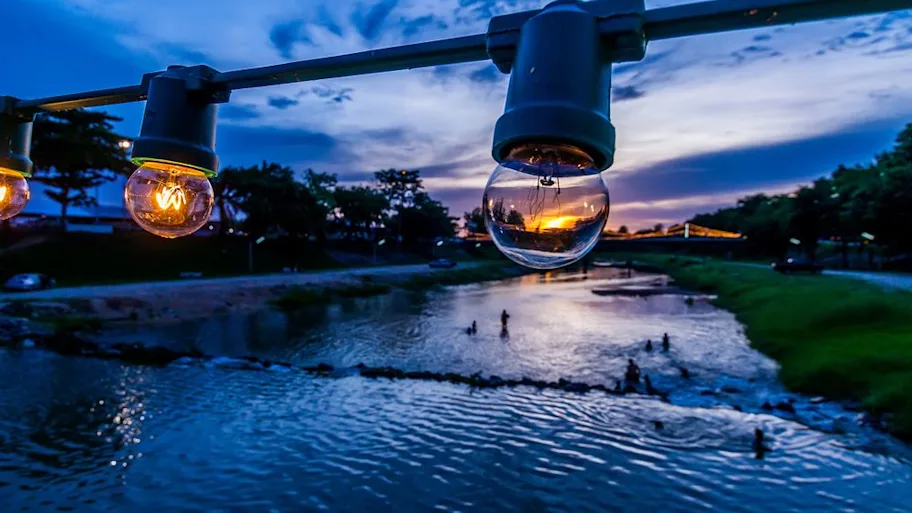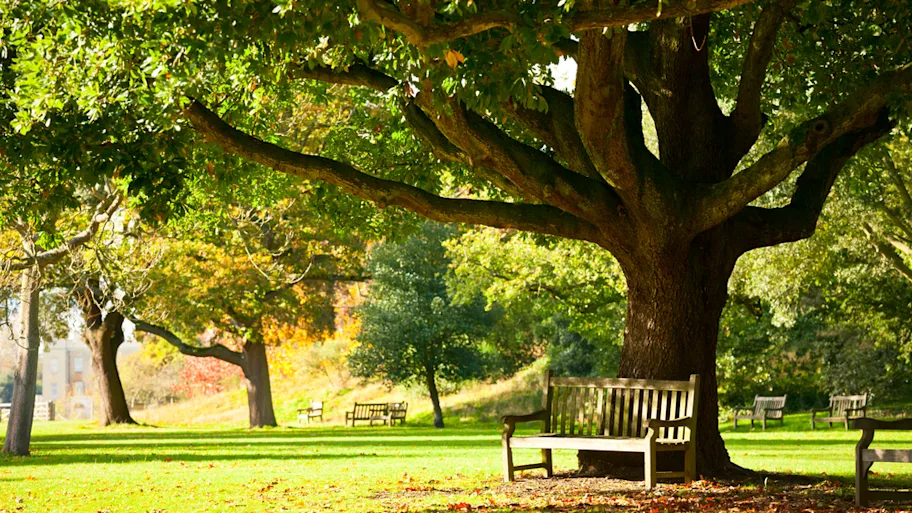
- Science news
- Environment
- How light from street lamps and trees influences the activity of urban bats
How light from street lamps and trees influences the activity of urban bats

The team found that the response of bats to artificial light was intensified in areas with high tree cover. Credit: Christian Giese.
A German study sheds new light on how exactly ultraviolet (UV) emitting and non-UV emitting street lamps influence the activity of bats in the Berlin metropolitan area, and whether tree cover might mitigate the effects of light pollution
— by Forschungsverbund Berlin
Artificial light is rightly considered a major social, cultural and economic achievement. Yet, artificial light at night is also said to pose a threat to biodiversity, especially affecting nocturnal species in metropolitan areas. It has become clear that the response by wildlife to artificial light at night might vary across species, seasons and lamp types.
A study conducted by a team led by the Leibniz Institute for Zoo and Wildlife Research (Leibniz-IZW) sheds new light on how exactly ultraviolet (UV) emitting and non-UV emitting street lamps influence the activity of bats in the Berlin metropolitan area and whether tree cover might mitigate any effect of light pollution. The study is published in the scientific journal Frontiers in Ecology and Evolution.
Tree Cover Mediates the Effect of Artificial Light on Urban Bats► Read original article► Download original article (pdf)
Natural sunlight sets the pace of day and night on our planet. Over millions of years, wildlife and people have adapted to the rhythm of the natural photoperiod. As creatures of daytime, humans have expanded their ecological niche into night-time by inventing and using artificial light. Yet nocturnal animals such as bats may suffer from the detrimental effects of artificial light generated by street lamps, a phenomenon now recognized as light pollution. As it turns out, bat responses to light pollution were complex.
“We observed a higher activity of two pipistrelle bat species, the common pipistrelle and Nathusius’ pipistrelle, in areas with high numbers of UV emitting street lamps”, explains Tanja Straka, scientist at the IZW’s Department of Evolutionary Ecology and first author of the study. These opportunistic species may feed on insects that are attracted to UV emitting lamps. “However, all other species were less active at and even repelled by the lamps, irrespective of whether the light they emitted did or did not contain UV light”, adds Straka.
The novelty of this study is that these effects were considered in relation to tree cover. Not only do trees provide bats with shelter during daytime, trees may also provide shade for bats in illuminated areas. “Our goal was to determine whether and how tree cover influences any responses of bats to artificial light”, says Straka.
Related: It’s not trails that disturb forest birds, but the people on them
The team found that the response of bats to artificial light was intensified in areas with high tree cover. For example, the attraction of Pipistrellus pipistrellus to UV light was more pronounced when many trees were present, probably because UV light attracted insects from the vegetation. On the other hand mouse-eared bats (Myotis spp.) were less frequently recorded in areas with a high number of street lamps (irrespective of UV or no UV emission) and lots of trees. Mouse-eared bats seem to be particularly light-sensitive and avoid illuminated areas even when these include trees or shrubs.
The team also found that high-flying insectivorous bats were more active in areas when the light emission from LED street lanterns was dampened by a high tree coverage than in areas with many LED lanterns and no trees. LED lights do not attract large numbers of insects and therefore they are not attractive as foraging grounds for high-flying bats; they might even be repelled by light spillover from LED lamps. Tree cover seems to reduce light spillover, which enable high-flying bats to fly in the shadow of the tree canopy”, Straka explains.
These results are based on the analysis of more than 11,000 bat calls recorded during three months at 22 sites in the Berlin city area. Bat calls were identified by species and the activity of bats was calculated for each species and site. These data were compared with features of the landscape, such as tree cover and the intensity of light pollution as estimated by remote sensing (i.e. satellite based data). In addition, the exact location of street lamps and information on UV light emission was used to estimate the level of light pollution in the study area.
“The bottom line is that for bats the relation between artificial light and vegetation is complex and it varies between species, yet overall artificial light at night has negative consequences for bats”, concludes Christian Voigt, the Head of Department. “Even those species that may hunt at street lamps opportunistically will suffer on the long run from the constant drain of insects dying at street lamps. Trees are important for urban bats, not only as a shelter but also as a source for prey insects. Hence artificial light should be avoided in habitats with many trees.”
Adding trees in highly lit areas or turning off lights when the area is not in use could substantially contribute to the conservation of bats and possibly also other nocturnal wildlife, because trees provide shade and refuge that bats urgently need.
Original article: Tree Cover Mediates the Effect of Artificial Light on Urban Bats
REPUBLISHING GUIDELINES: Open access and sharing research is part of Frontiers’ mission. Unless otherwise noted, you can republish articles posted in the Frontiers news blog — as long as you include a link back to the original research. Selling the articles is not allowed.






